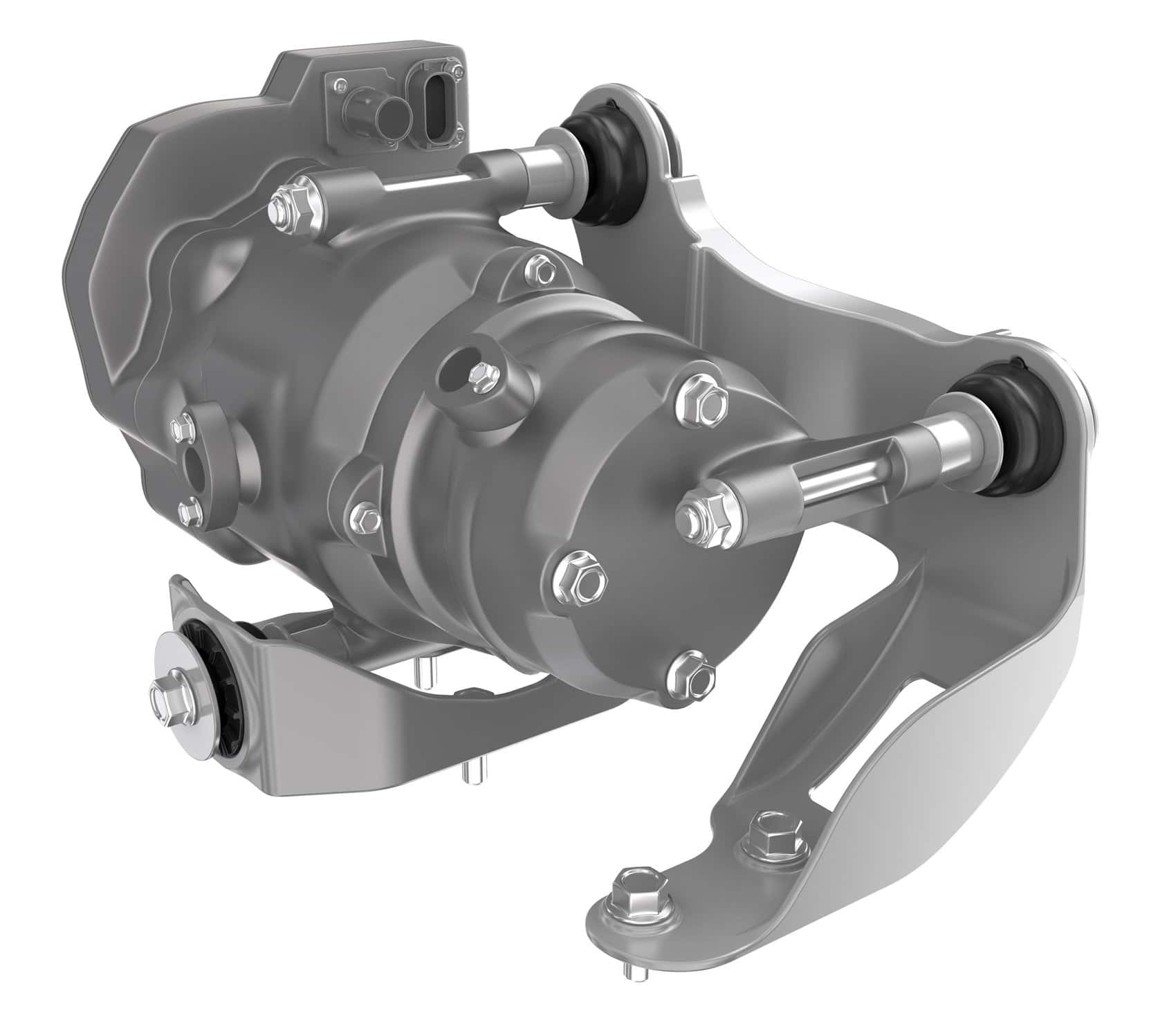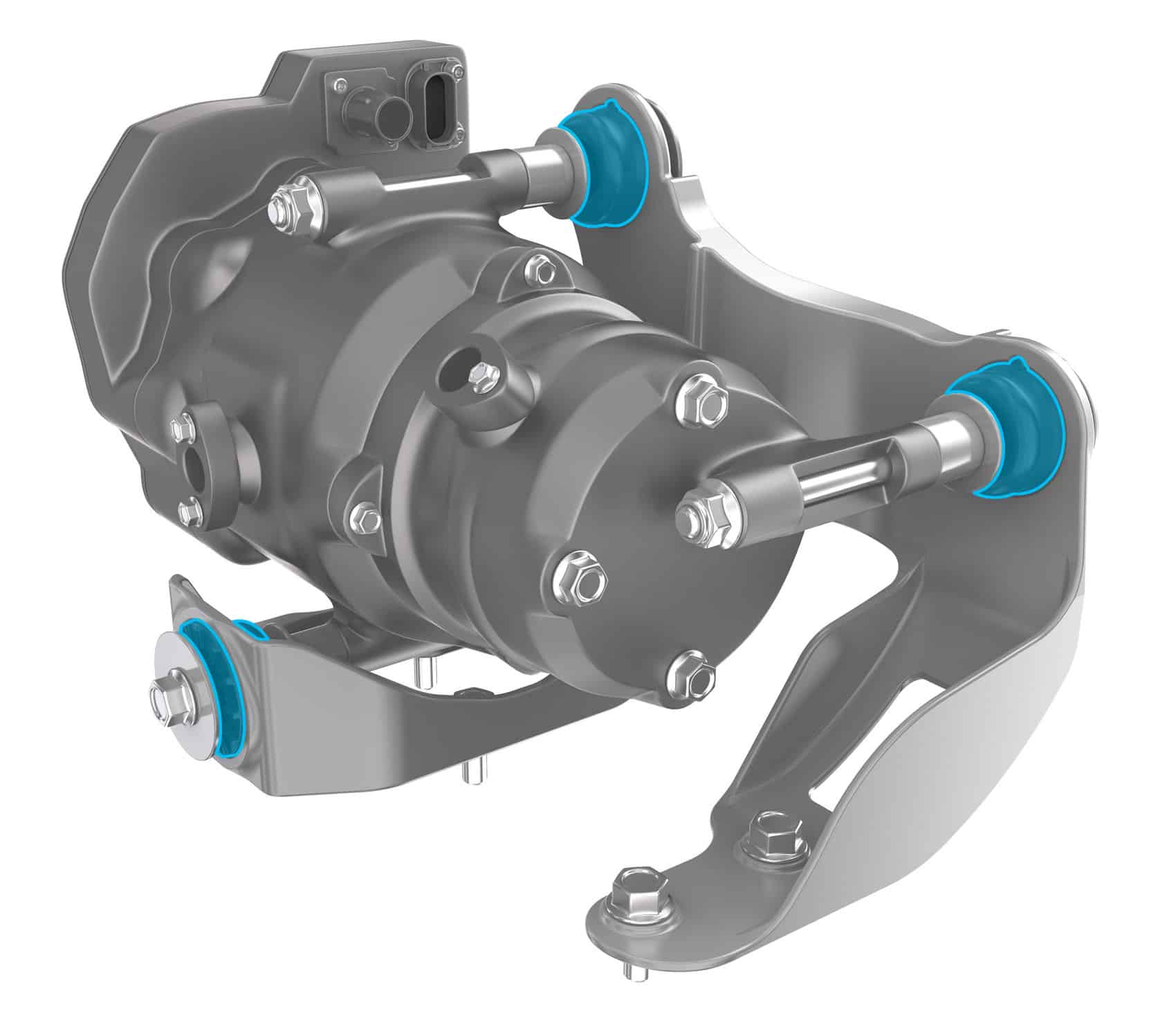Darmstadt, 17 December 2020
Vibracoustic launches innovative eCompressor decoupling solution
Vibracoustic, a global leader in automotive NVH (noise, vibration and harshness) solutions, has launched an innovative new decoupling system for eCompressors fitted to modern battery-electric and plug-in hybrid vehicles. The new solution solves many of the NVH challenges faced by automotive engineers in balancing thermal management with excessive noise and vibration from highly loaded eCompressors.
The cooling systems are used by battery-electric vehicles (BEVs) and plug-in hybrid electric vehicles (PHEVs) to manage cabin temperature and ensure batteries remain within their optimum operating temperature range. They typically rely on electrically driven compressors known as eCompressors to circulate the coolant. The substantial power requirements of fast charging mean that eCompressors experience much greater loads and generate more NVH than their conventional combustion-engine counterparts.
In addition, the NVH that is generated by a vehicle’s electric powertrain motor and its eCompressor occur at very different speed ranges, orders and excitation directions, making a viable solution significantly more complex. Soft elastomer mounts would ordinarily provide exceptional isolation, yet in the case of the eCompressor they would need to be large and potentially less robust, reducing their service life and making packaging far more difficult.
Vibracoustic eCompressor decoupling solution
With extensive testing and simulation processes of the entire mounting system, Vibracoustic was able to design, develop and manufacture a bracket and mounting assembly that eliminated internal noise and vibrations during motion, as well as minimizing compressor noise while stationary during fast charging. The engineering team achieved these objectives by optimizing bearing stiffness and position. They also conducted comprehensive elastomer simulation and testing to determine the ideal rubber compound. Proprietary software was then used to adjust rubber component geometry for minimum wear and maximum service life.
Using this approach, Vibracoustic developed the capacity to individually select materials depending on application and tailor isolator components for specific requirements, including weight-reduction and cost-optimization. As part of the project, the company also produced specialized low-weight brackets and validated possible bracket materials including aluminum, steel and plastic. This allowed the described conflicts of objectives to be systematically analyzed, evaluated and ultimately resolved.
Dr Jörg Böcking, CTO at Vibracoustic, explained: “Tomorrow’s mobility solutions are presenting us with challenges today. The transition towards hybrid and electric vehicles has meant that vehicle manufacturers around the world need to adapt rapidly to address entirely new NVH issues. As a global leader in the field, our expertise is in providing automotive manufacturers with customized solutions to novel and complex NVH challenges. Isolating the vibration and noise from eCompressors is just one of the solutions we offer for customers developing future mobility concepts.”
Particular emphasis was placed on front-wheel and all-wheel drive models, where movement of the eCompressor can be intensified by the electronic drive unit (EDU) leading to higher loads. For rear-wheel drive vehicles, the eCompressor is often mounted to an axle carrier or similar and can use double isolation since the decoupling level of engine mounts is not used.


